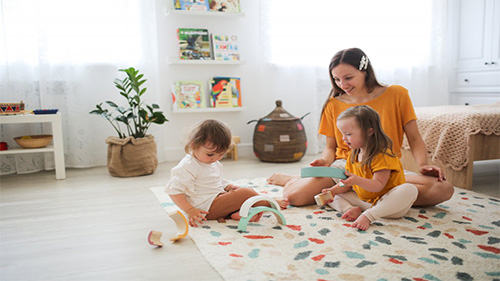How Daylight and Sleep Patterns Affect Healthy Infant Sleep?

Establishing healthy sleep habits for infants is a top priority for many parents. Recent research has highlighted two fundamental factors that significantly influence healthy infant sleep: exposure to natural light and a regular sleep routine. Together, these two factors form a powerful model for promoting better sleep for infants and their caregivers.
The Role of Daylight in Regulating Infant Sleep
Infants' internal clocks, which regulate their sleep and wake cycles, are still developing during the first few months of life. Exposure to natural light, especially in the morning, plays a crucial role in helping synchronize these rhythms. Studies have shown that infants who receive adequate daylight during the day tend to sleep more efficiently at night and experience greater daytime alertness.
Instructing infants to engage in outdoor activities during the day, such as walking, or simply allowing them to spend time in a well-lit room, can reinforce their natural sleep-wake patterns. This exposure helps signal to their developing circadian system that daytime is time for activity and nighttime is time for rest.
Establishing a Regular Sleep Routine
In addition to exposure to daylight, establishing a regular sleep routine is crucial for developing healthy sleep habits. Your infant can learn to relax by following a consistent bedtime ritual, such as reading a short tale after taking a warm bath. Research indicates that infants who establish a bedtime routine by 9 p.m. at the latest sleep longer and more consistently at night.
These habits may be strengthened by sticking to a regular sleep pattern, which includes set nap and waking periods. This pattern helps your baby's internal sleep schedule grow and gives them a sense of stability.
Combining daylight and routine for optimal sleep health
Combining exposure to natural light with a regular sleep routine can have a synergistic effect on your baby's sleep health. Daylight exposure helps regulate circadian rhythms, while a regular sleep routine provides the necessary sleep structure for your baby, helping them better anticipate and prepare for sleep.
For example, after a morning walk in natural light, you can transition into a calming bedtime routine. This approach not only promotes healthy sleep habits but also fosters a positive sleep environment, benefiting both baby and parent.
By understanding and leveraging the interplay between daylight exposure and regular sleep habits, parents can create an environment that supports their baby's natural sleep development. This holistic approach not only improves sleep quality but also promotes the overall health of both baby and caregiver.
Recommended for you



